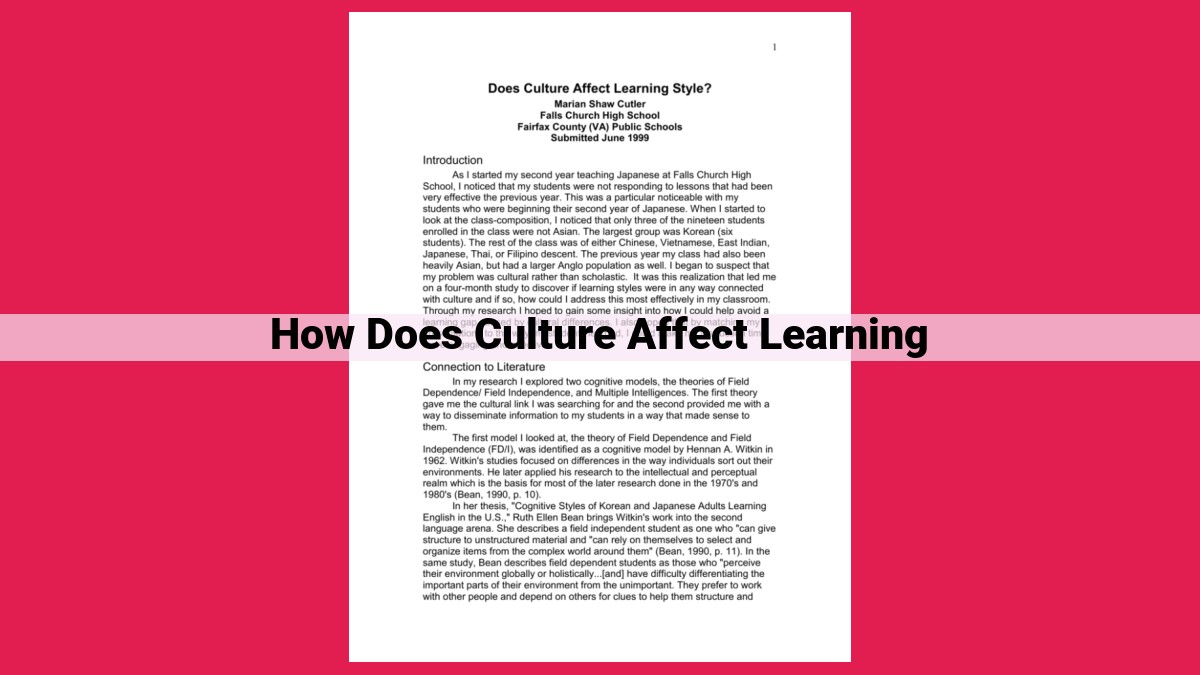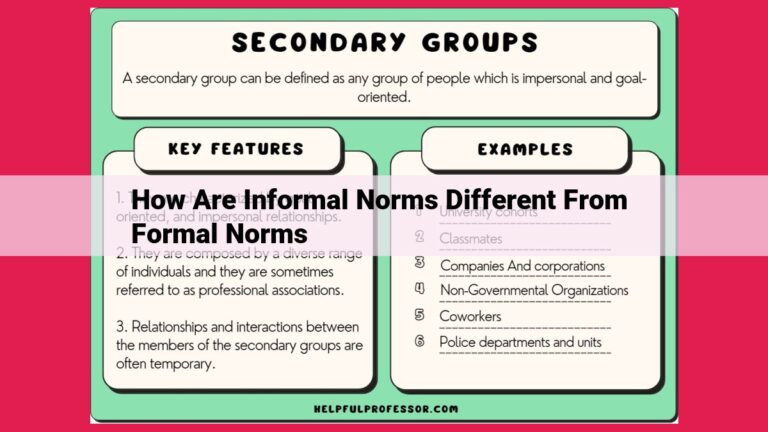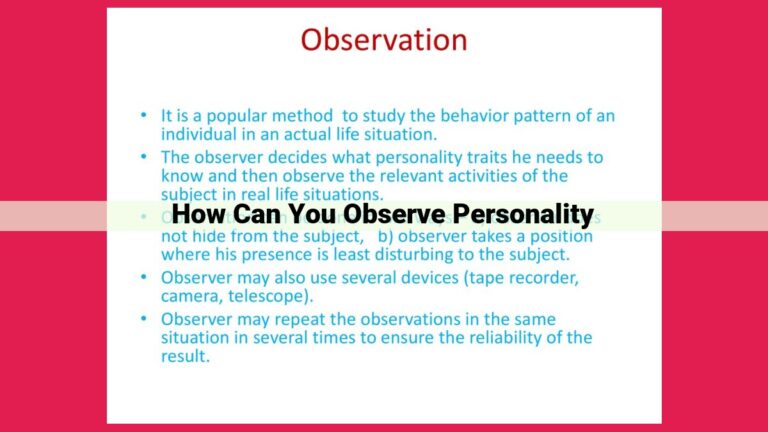Unlocking The Power Of Culture: How It Transforms Student Learning

Culture profoundly shapes learning through:
– Cultural biases in materials affecting student outcomes
– Cultural values influencing learning styles and preferences
– Cultural norms and expectations impacting motivation and aspirations
– Cultural contexts shaping cognitive development and understanding
– Communication differences affecting participation and comprehension
– Cultural identity shaping self-esteem and academic achievement
– Culturally-relevant pedagogy enhancing inclusivity and engagement
– Valuing cultural diversity in classrooms promotes equity and support
Cultural Bias in Learning Materials: Its Impact on Student Learning
In the realm of education, fostering an inclusive and equitable learning environment is paramount. However, the presence of cultural biases in learning materials can hinder this goal. These biases stem from unconscious assumptions and stereotypes that favor particular cultural perspectives and identities, resulting in underrepresentation or misrepresentation of diverse cultures.
Importance of Cultural Sensitivity, Inclusion, Equity, Representation, and Diversity in Educational Materials
Cultural sensitivity in educational materials ensures that they are tailored to the needs of students from various backgrounds, acknowledging their unique experiences and perspectives. Inclusion fosters a sense of belonging, while equity provides equal opportunities for all students to learn and succeed. Representation allows students to see themselves reflected in the curriculum, which boosts their self-esteem and motivation. Diversity exposes students to a wide range of perspectives, promoting open-mindedness and critical thinking.
How Biases Can Affect Student Learning
Cultural biases in learning materials can have detrimental effects on student learning. By perpetuating stereotypes and marginalizing certain cultures, they can create a negative learning environment for underrepresented students. This can lead to lower self-esteem, decreased motivation, and academic underachievement. Additionally, students may develop misconceptions or limited understandings of cultures different from their own, hindering their ability to engage meaningfully with society.
Addressing Cultural Bias in Learning Materials
To mitigate the impact of cultural bias, educators and curriculum designers must take conscious steps to ensure the materials they use are culturally sensitive and inclusive. This involves consulting with experts from diverse backgrounds, reviewing materials for bias, and actively seeking out resources that represent a wide range of cultures. By doing so, we can create learning environments that promote equity, foster inclusion, and empower students from all walks of life.
Influence of Cultural Values on Learning Styles
Culture is a powerful force that shapes every aspect of our lives, including the way we learn. Cultural values, beliefs, and norms can profoundly influence students’ learning preferences and how they approach and engage with the educational process.
Cultural Perspectives on Learning
Different cultures emphasize different values and priorities in learning. In some cultures, individualism is highly valued, and students are encouraged to think and learn independently. In other cultures, collectivism is more prevalent, and students place great importance on cooperation and group learning. These cultural values can shape students’ preferred learning environments and teaching styles.
For example, in individualistic cultures, students may prefer learning environments where they have autonomy and can work at their own pace. Teachers in these cultures may use more student-centered teaching methods that emphasize critical thinking and problem-solving. In collectivist cultures, students may prefer learning environments that are more structured and collaborative. Teachers in these cultures may use more teacher-centered teaching methods that emphasize memorization and rote learning.
Cultural Beliefs about Intelligence
Cultural beliefs about intelligence can also influence learning styles. In some cultures, intelligence is viewed as a fixed trait that cannot be changed. In other cultures, intelligence is viewed as a malleable quality that can be developed through effort and education. These beliefs can affect students’ self-perceptions and motivation to learn.
For example, in cultures that view intelligence as a fixed trait, students who do not perform well in school may believe that they are not intelligent and give up on trying. In cultures that view intelligence as a malleable quality, students who do not perform well in school may be more likely to attribute their failures to effort and continue to try.
Cultural Norms and Expectations
Cultural norms and expectations can also influence learning styles. In some cultures, it is considered impolite to ask questions in class. In other cultures, asking questions is seen as a sign of engagement and curiosity. These norms can shape students’ willingness to participate in class and ask for help when they need it.
For example, in cultures where it is considered impolite to ask questions in class, students may be less likely to seek clarification when they do not understand something. This can lead to misunderstandings and difficulty with learning. In cultures where asking questions is seen as a sign of engagement and curiosity, students may be more likely to ask for help when they need it, which can lead to better understanding and learning.
By understanding the influence of cultural values on learning styles, educators can create more effective and inclusive learning environments for all students.
Cultural Norms and Expectations: Shaping Student Motivation
Cultural influences play a pivotal role in shaping student motivation, extending beyond the physical boundaries of the classroom and deeply into the fabric of society. Cultural context encompasses the shared values, beliefs, and practices that permeate a community, while peer pressure exerts a significant influence on individual behavior and family values instill deeply held principles that guide our aspirations.
In some cultures, academic achievement is highly valued, and students are expected to pursue excellence in education. This positive reinforcement can foster a strong sense of self-belief and motivate students to set high goals. Conversely, in cultures where education is not as highly prioritized, students may face lower expectations and lack the same level of motivation.
Peer pressure can also significantly impact student motivation. In cultures that emphasize collectivism, students may be more likely to conform to group norms, including those related to academic achievement. This can create a supportive environment where students encourage each other to succeed. However, in cultures that prioritize individualism, students may feel more pressure to compete against their peers, leading to competition and anxiety that can undermine motivation.
Family values play a crucial role in shaping students’ academic aspirations. In cultures where education is seen as a path to success and prosperity, families may provide strong support and encouragement to their children to excel academically. This can instil a sense of purpose and drive in students, motivating them to pursue higher education and career goals.
Cultural norms and expectations can also affect students’ self-esteem and academic self-beliefs. In cultures that emphasize humility, students may be reluctant to express their academic strengths and abilities, leading to low self-esteem and a lack of motivation. Conversely, in cultures that encourage self-promotion, students may be more confident in their abilities and more likely to pursue challenging academic tasks.
Understanding the role of cultural norms and expectations in shaping student motivation is essential for educators and parents. By being aware of these cultural influences, we can create inclusive and supportive learning environments that foster motivation, empowerment, and a genuine love for learning.
The Role of Culture in Shaping Cognitive Development
Culture plays a pivotal role in shaping our cognitive development. It provides us with the mental tools and frameworks we use to make sense of the world. Through our cultural experiences, we learn how to perceive, interpret, and respond to different stimuli.
Cultural Tools:
Language is a powerful cultural tool that shapes our thinking. The words we use, the grammar we employ, and the stories we tell all reflect our cultural values and beliefs. Language influences how we perceive the world and how we express our thoughts. For instance, in some cultures, time is perceived linearly, while in others, it is seen as cyclical.
Other cultural tools include symbols, rituals, and artifacts. These tools help us to organize our experiences and make meaning of the world around us. For example, in many cultures, the color red is associated with danger or excitement, while in others, it is associated with happiness or luck.
Cultural Beliefs:
Our cultural beliefs also shape our cognitive development. These beliefs include our values, norms, and assumptions about the world. They influence how we solve problems, make decisions, and interact with others. For instance, some cultures emphasize individualism, while others prioritize collectivism. This difference can affect how people approach teamwork and problem-solving.
Cultural Experiences:
The cultural experiences we have throughout life also influence our cognitive development. These experiences include our interactions with family, friends, teachers, and our community. They help us to develop our sense of self and our understanding of the world. For instance, children who grow up in cultures that emphasize storytelling often have stronger narrative skills than those who do not.
Culture is a powerful force that shapes our cognitive development in many ways. It provides us with the tools, beliefs, and experiences we need to make sense of the world around us. By understanding the role of culture in cognition, we can better appreciate the diversity of human thought and experience.
Cultural Differences in Communication and Language Use
In the vibrant tapestry of a classroom, students from diverse backgrounds weave together their unique experiences, cultures, and perspectives. Yet, amidst this rich mosaic, disparities in communication and language use can sometimes pose challenges. Join us as we explore how cultural differences in these areas can impact student participation and understanding.
Nonverbal Communication:
A subtle nod, a furrowed brow, or an outstretched hand—nonverbal cues speak volumes where words fail to convey. However, the interpretation of these cues varies significantly across cultures. For instance, in some cultures, eye contact is considered a sign of respect, while in others, it may be seen as intrusive. Understanding such differences is crucial for effective communication in the classroom.
Language Barriers:
Language barriers can hinder students from fully engaging in classroom discussions and comprehending learning materials. For students whose native language differs from the language of instruction, acquiring fluency can take time and effort. Additionally, dialects and colloquialisms can further complicate language comprehension. To bridge these gaps, educators can provide language support, such as translation services or multilingual learning materials.
Cultural Communication Styles:
Beyond language barriers, cultural differences in communication styles can also influence student participation. For example, in cultures that emphasize directness, students may feel comfortable interrupting or asking questions during lectures. In more indirect cultures, on the other hand, students may prefer to wait their turn or seek clarification privately. Understanding and respecting these stylistic differences fosters an inclusive learning environment where all students feel comfortable expressing themselves.
Impact on Student Participation:
Cultural disparities in communication and language use can affect student participation in significant ways. Students who feel less comfortable communicating in the classroom setting may be less likely to share ideas, ask questions, or participate in group discussions. This can hinder their academic growth and limit their engagement with the learning process.
Strategies for Overcoming Barriers:
Educators play a vital role in addressing these barriers by fostering a classroom environment that embraces diversity. Encouraging respectful communication, providing language support, and raising awareness about cultural differences can create an inclusive space where all students feel valued and can participate fully. By recognizing and embracing the richness of cultural diversity, we can empower all students to thrive in the classroom and beyond.
Impact of Cultural Identity on Academic Achievement
Cultural identity plays a pivotal role in shaping students’ academic journeys. It encompasses their beliefs, values, traditions, and experiences that mold their self-perception and sense of belonging. This identity has profound implications for their motivation, self-esteem, and ultimately, their academic success.
Self-Esteem and Cultural Capital
Students with strong cultural identities often possess higher levels of self-esteem. They derive a sense of pride and accomplishment from their cultural heritage, which translates into positive academic outcomes. Additionally, cultural capital, the sum of knowledge and skills acquired through cultural participation, provides students with a valuable foundation for learning.
Cultural Experiences and Academic Motivation
Cultural experiences offer students unique opportunities to explore their interests, develop their talents, and build confidence. Engagement in cultural activities can ignite a passion for learning and motivate students to excel academically. Exposure to diverse perspectives challenges students’ thinking, fostering critical thinking and problem-solving skills.
Sense of Belonging and Academic Performance
A sense of belonging is crucial for academic success. When students feel connected to their school and community, they are more likely to participate actively, engage with their peers, and seek support when needed. Inclusive classrooms that value and celebrate cultural diversity foster a welcoming environment where all students feel respected and supported.
Cultural identity is an integral part of students’ learning experiences. By recognizing and embracing the diverse cultural backgrounds of their students, educators can create inclusive classrooms that empower students to succeed academically and foster their overall well-being. Teachers who embrace culturally responsive pedagogy and value cultural diversity become allies for their students, fostering a sense of belonging, self-esteem, and academic achievement.
Culturally Relevant Pedagogy: Empowering Students through Inclusivity
In the tapestry of education, cultural diversity weaves a vibrant thread, enriching our classrooms and expanding our horizons. By embracing culturally relevant pedagogy, educators ignite a spark within students, fostering equitable learning experiences that resonate with their cultural identities and aspirations.
Benefits of Culturally Relevant Pedagogy:
- Enhanced Student Engagement: When students see themselves reflected in their learning materials and experiences, they become more engaged and motivated. Their cultural backgrounds become a bridge to understanding concepts, making learning more meaningful and relatable.
- Improved Academic Outcomes: Culturally relevant pedagogy promotes deeper learning and critical thinking skills. By connecting content to students’ lived experiences, educators foster a deeper understanding and application of knowledge.
- Increased Self-Esteem and Cultural Pride: When students feel valued and respected for their cultural perspectives, it boosts their self-esteem and sense of belonging. They learn to embrace their unique identities while recognizing the diversity of others.
Strategies for Implementing Culturally Relevant Pedagogy:
- Curriculum Design: Ensure that curriculum materials reflect the cultural backgrounds and experiences of students. Incorporate texts, images, and examples that resonate with their values and beliefs.
- Teaching Methods: Engage students in hands-on activities, collaborative group work, and project-based learning that connect to their cultural experiences. Create lesson plans that draw parallels between diverse perspectives.
- Student Engagement Strategies: Provide opportunities for students to share their own cultural knowledge and experiences in the classroom. Organize cultural exchange events, field trips, and guest speakers to broaden perspectives and foster understanding.
By embracing culturally relevant pedagogy, educators create inclusive learning environments that empower students from all backgrounds to thrive academically and socially. It is a transformative approach that celebrates diversity, nurtures self-esteem, and empowers learners to navigate a complex and ever-changing world with confidence and empathy.
Cultural Diversity in the Classroom
Embracing cultural diversity in the classroom is paramount for fostering an inclusive and equitable learning environment where every student feels valued and supported. By recognizing and celebrating the rich tapestry of cultures represented within the classroom, educators can create a space where diversity is not merely tolerated but embraced.
Strategies for valuing and supporting students from diverse cultural backgrounds should be multifaceted, encompassing:
-
Curriculum Design: Incorporating diverse perspectives, histories, and experiences into the curriculum ensures that all students see themselves reflected in the learning materials.
-
Teaching Methods: Utilizing responsive and culturally sensitive teaching methods allows educators to connect with students on a personal level, fostering engagement and understanding.
-
Student Engagement Strategies: Creating opportunities for students to share their cultural experiences, perspectives, and traditions enriches the classroom environment and promotes a sense of belonging.
Recognizing that cultural identity is an integral part of each student’s identity, educators must strive to create a classroom atmosphere where students feel safe and empowered to express themselves authentically. By intentionally fostering a culture of respect, inclusivity, and equity, we can create classrooms that are not only diverse but also dynamic and enriching for all.




